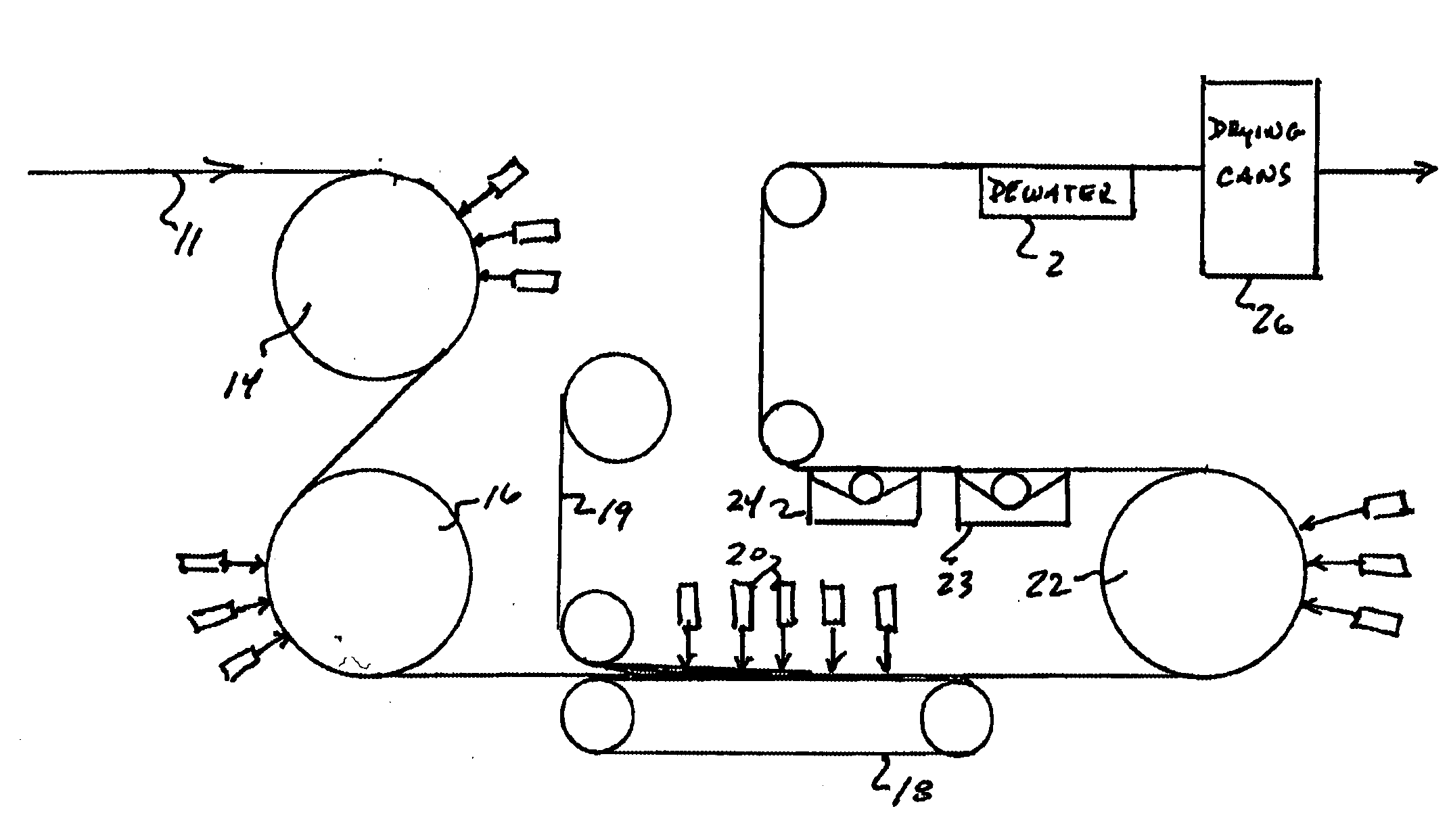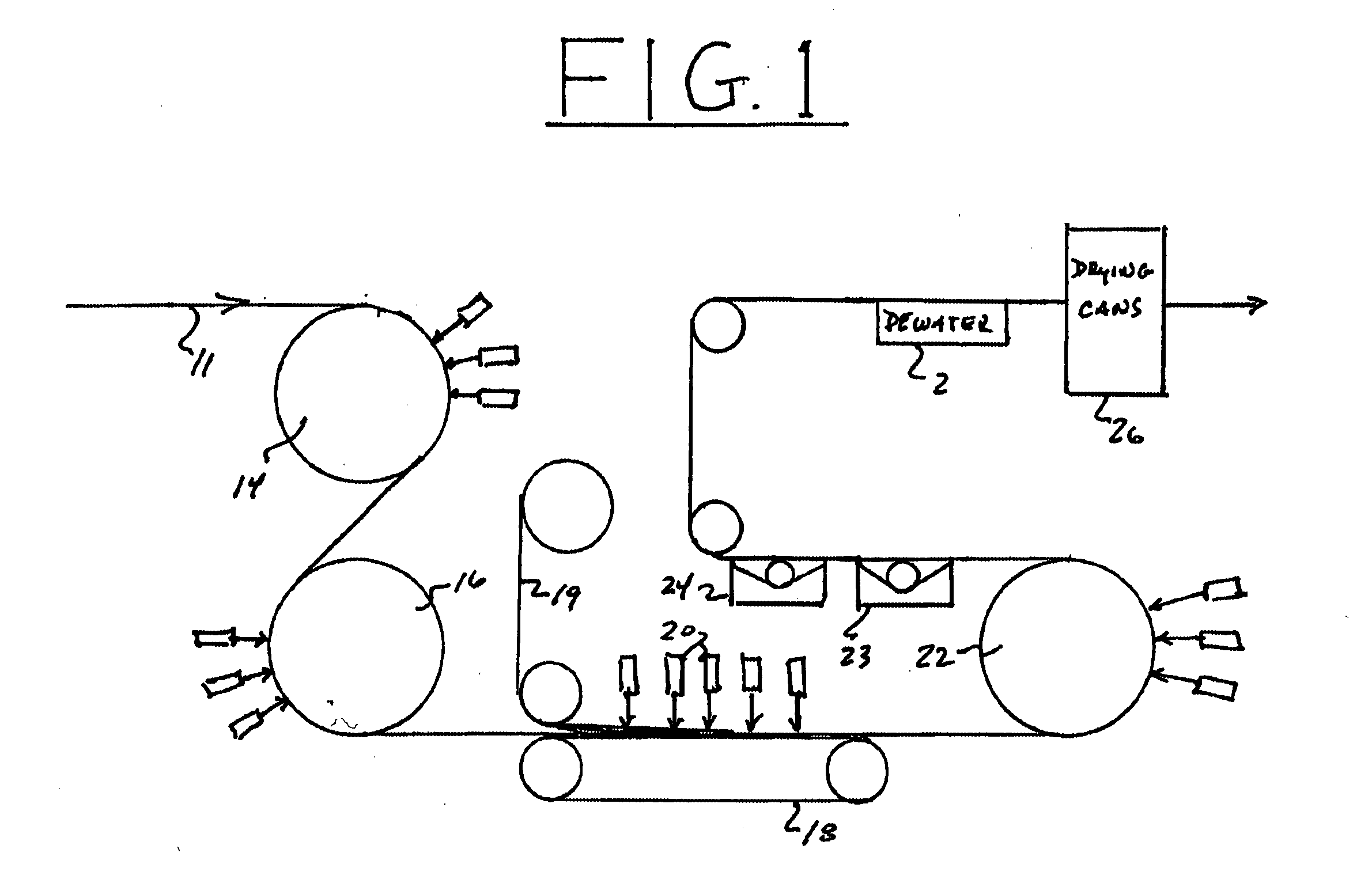Acid washed nonwoven fabric
a non-woven fabric, acid-washing technology, applied in weaving, cleaning equipment, detergent compounding agents, etc., can solve the problems of affecting the use of electronic devices, lint particles that can become electrically charged, and malfunctions of electronic devices, etc., to achieve excellent drape, low lint, and low streaking
- Summary
- Abstract
- Description
- Claims
- Application Information
AI Technical Summary
Benefits of technology
Problems solved by technology
Method used
Image
Examples
Embodiment Construction
[0012] While the present invention is susceptible of embodiment in various forms, there is shown in the drawing, and will hereinafter be described, a presently preferred embodiment, with the understanding that the present disclosure is to be considered as an exemplification of the invention, and is not intended to limit the invention to the specific embodiment illustrated.
[0013] The fibers utilized in the present invention include those of both synthetic and natural composition, of a finite staple length or natural fiber length. Synthetic fibers include those selected from thermoset polymers, thermoplastic polymers, and the combinations thereof. Representative thermoplastic fibers include polyamides, polyesters, and polyolefins. Natural fibers include those that are of cellulosic composition, such as wood pulp, cotton, and rayons. These fibers may optionally be applied to, or otherwise, incorporate one or more layers of the same or different composition, including other staple fibe...
PUM
| Property | Measurement | Unit |
|---|---|---|
| Fraction | aaaaa | aaaaa |
Abstract
Description
Claims
Application Information
 Login to View More
Login to View More - R&D
- Intellectual Property
- Life Sciences
- Materials
- Tech Scout
- Unparalleled Data Quality
- Higher Quality Content
- 60% Fewer Hallucinations
Browse by: Latest US Patents, China's latest patents, Technical Efficacy Thesaurus, Application Domain, Technology Topic, Popular Technical Reports.
© 2025 PatSnap. All rights reserved.Legal|Privacy policy|Modern Slavery Act Transparency Statement|Sitemap|About US| Contact US: help@patsnap.com


